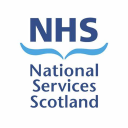Insulin hypoglycaemia test

Introduction
Commonly known as the Insulin Tolerance Test.
It is recognised as the “gold standard” for assessment of growth hormone deficiency, particularly as it also tests the hypothalamo-pituitary-adrenal axis.
This is a potentially high-risk test and should only be carried out in a specialist centre where the test is being performed on a regular basis by experienced staff.
Any form of stress results in the secretion of hypothalamic hormones, growth hormone releasing hormone (GHRH) and corticotrophin releasing hormone (CRH). These in turn stimulate the release of pituitary growth hormone (GH) and adrenocorticotrophic hormone (ACTH). ACTH release leads to cortisol secretion by the adrenal glands.
Insulin administration is used to produce stress in the form of hypoglycaemia, and hypothalamic pituitary adrenal (HPA) function is assessed by GH and cortisol responses to the hypoglycaemic stimulus.
This test is designed to produce symptomatic hypoglycaemia (pallor, sweating).
If symptoms are more severe (impaired or loss of consciousness) the child must be treated immediately (see below). Continuous observation for the symptoms of severe hypoglycaemia is essential throughout the test, and for one hour after its completion.
Contraindicated in children with a history of epilepsy or cardiac arrhythmias.
The test should be used with caution in young children, as symptoms of hypoglycaemia may be difficult to detect.
Generally avoided in children under the age of 5 years.
- The patient should be fasted overnight (no more than 4 hours for infants); drinks of water are allowed.
- Weigh the patient and insert a cannula at least 30 minutes before taking the baseline samples. The patient should be resting throughout the test. Aim to start the test between 0800h and 0900h.
- Ensure that a glucose drink is available before the start of the test. This can be made up with four heaped teaspoons (equivalent to approximately 40g) dextrose powder dissolved in approximately half a glass of diluting juice. Or an equivalent glucose containing drink.
- Ensure that glucose, and hydrocortisone are also available for intravenous injection if needed (see emergency treatment of severe hypoglycaemia, below).
- Observe the child continuously during the test for symptoms of severe hypoglycaemia.
- Check the glucose concentration in each blood sample collected using the ward blood glucose meter or more frequently if the child is developing hypoglycaemic symptoms.
- If symptoms of severe hypoglycaemia develop, they must be treated immediately. See below.
Drug(s) Given
Actrapid insulin 0.1 units per kg body weight.
How Given
Make up Actrapid insulin solution in 0.9% sodium chloride to give a solution containing 1 unit per ml.
Dose = 0.1 units per kg body weight.
Reduce the dose of insulin to be given to 0.05 units per kg in patients who might be unduly sensitive to insulin.
These include patients with a high clinical suspicion of hypopituitarism, those with severe malnutrition (e.g. due to anorexia nervosa) or those with a baseline blood glucose between 3.5 and 4.5 mmol/L).
Timing of Administration
Give after the two basal blood samples have been taken and the Capillary Blood Glucose is known.
| Time (minutes) | Action |
| -30 | Insert a reliable cannula. Take venous blood sample. Measure capillary blood glucose (CBG) using ward meter. |
| 0 | Take venous blood sample. Measure CBG. If it is less than 3.5mmol/L in either of the two baseline samples, do NOT give insulin but continue to take blood samples (see below) and record whether child has symptoms (pale, sweating). If blood glucose, measured using the ward meter, is between 3.5 and 4.5mmol/L in either of the two baseline samples: Give half the dose of insulin and continue the test. Give all the dose of insulin if CBG is above 4.5mmol/L.. |
| 15 | Take venous blood sample. Measure CBG. |
| 30 | Take venous blood sample. Measure CBG. |
| 60 | Take venous blood sample. Measure CBG. |
| 90 | Take venous blood sample. Measure CBG. |
| 120 | Take venous blood sample. Measure CBG. |
Patient is most likely to become hypoglycaemia within first 30 mins of test and additional samples should be taken if and when there are signs/symptoms of hypoglycaemia.
Give a glucose drink when:
- Adequate hypoglycaemia has been established (a laboratory blood glucose of less than 2.2 mmol/L or a 50% reduction in the baseline glucose concentration).
- If the child shows signs of hypoglycaemia (e.g. is sweaty and drowsy).
- If there are more severe symptoms of hypoglycaemia (impaired or loss of consciousness), intravenous glucose may be required.
NOTE: ward meters frequently overestimate blood glucose concentrations.
See emergency treatment guidelines below.
| Time (minutes) | |||||||
| -30 | 0 | 15 | 30 | 60 | 90 | 120 | |
| Glucose | |||||||
| GH | |||||||
| Cortisol | |||||||
| IGF1 | |||||||
| T4, TSH | |||||||
| LH, FSH 1 | |||||||
| Oestradiol 1 Testosterone | |||||||
1 If LHRH is performed at the same time.
